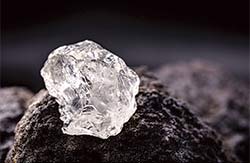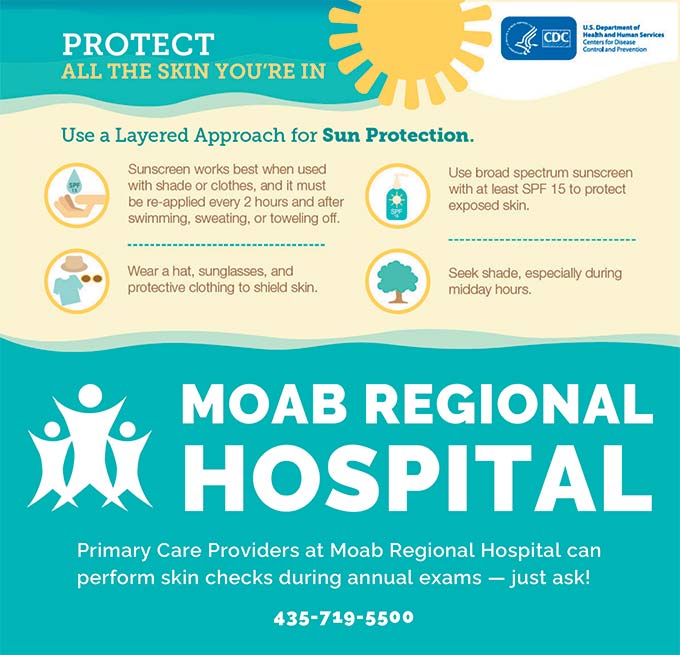|
|
HEALTHY HAPPENINGS - May 2023
|
Not Just for Tesla
by Ray Andrew, MD
|
 Coming from the Southwest to Utah for college has been hard on Craig. He never had depression or anxiety until his first four winters here. Finding social interactions increasingly taxing, he keeps to himself when not in class. He hasn’t even thought of going to the gym in years, even though he used to enjoy it in high school. Coming from the Southwest to Utah for college has been hard on Craig. He never had depression or anxiety until his first four winters here. Finding social interactions increasingly taxing, he keeps to himself when not in class. He hasn’t even thought of going to the gym in years, even though he used to enjoy it in high school.
Within a month of making a simple change, Craig is no longer “in survival mode” like he was. He surprises himself by wanting to hang out with his roommates. He enjoys going to the gym again. He did not get depressed or anxious this winter, despite it dragging on. During a recent visit home, Craig’s parents and siblings noted he was less confrontational, more at peace, more patient, and seemed to be happier than he had been in a long time.
Eight-year-old Aspen has been in therapy for anxiety and ADHD since first grade. Within a week of making a change like Craig’s, Aspen’s anxiety has decreased dramatically. She is better able to use the coping skills she was taught in therapy. Her focus has improved. She is performing better in school.
Cathy has taken several antidepressants over the decades, and seen a string of therapists. She has never been happy, and just assumed that depression was her lot in life. She was told she simply had a chemical imbalance and would have to take antidepressants all her life in order to maintain a reasonable level of function. Therapy has given her invaluable coping tools, but she has exhausted the benefits of ongoing counseling. Within a month of making a simple change, Cathy has more energy, feels happy, is motivated to do things she enjoys, and no longer procrastinates the tasks of daily life that everyone else performs without thinking about them.

Craig, Aspen, and Cathy are benefitting from a cutting-edge medical breakthrough that was discovered in 1817 but not popularized until 1949. Even then, most psychiatrists who used it reserved it for the treatment of bipolar disorder. In medical school, I learned it was of historical interest only, having been replaced by safer and more effective drugs. This is because the high doses that are required for bipolar disorder must be monitored closely to avoid toxicity.
Taking a closer look, however, you might be surprised to learn that, like so many other substances essential to human health, this drug isn’t a drug after all. Man did not invent it, nor can he manufacture it. He can only make it a patentable drug by combining it with other molecules. This is because the mineral lithium comes from the earth.
Lithium is so critical to mental health that cities, counties, and countries that have the lowest lithium levels in drinking water have the highest suicide rates. A study conducted in Texas demonstrated that the lower the lithium in the drinking water, the higher the rate of arrests for possession of narcotics. Other studies show that higher lithium levels decrease aggression and homicide. Paradoxically, America’s mental health crisis has risen dramatically since we launched an effort to prevent it. This should not surprise us when we learn that more than half of American children have undetectable lithium levels in their bodies. This percentage has increased with each decade.
Whereas antidepressants have their role in severe mental illness, most people recover using natural approaches that address known causes of depression. This is becoming increasingly important as we discover more side effects and long-term risks of these drugs. Many people experience undesirable weight gain, insomnia, fatigue, sexual dysfunction, or blunting of their emotions while taking antidepressants. In spite of this, 66% of patients on treatment do not even achieve remission. More concerning still, investigations of mass shootings since 1989 reveal a striking correlation with antidepressant use. This is important because depressed people are far more likely to harm themselves than others unless they are taking antidepressants. For this reason, antidepressants are required to carry the following black box warning label: “Anxiety, agitation, panic attacks, insomnia, irritability, hostility, aggressiveness, impulsivity, akathisia, hypomania, and mania have been reported in adult and pediatric patients being treated with antidepressants.”
By contrast, tens of thousands of studies catalogued in the National Library of Medicine database demonstrate the benefits of the mineral lithium in seemingly every aspect of mental and physical health. This includes depression, suicide risk, anxiety, posttraumatic stress disorder, attention deficit/hyperactivity disorder, stroke, traumatic brain injury, Huntington’s disease, ALS, Alzheimer’s, Parkinson’s, impulsivity, aggressiveness, anger, addictive behaviors, cancer, diabetes, gout, heart disease, viral infections, and much more.
This is not to say that lithium is the latest magic bullet treatment for everything that ails Americans. Rather, it is a trace mineral that has been an essential part of the human body for thousands of years. There is no drug in existence that can boast so many benefits affecting such a wide variety of organ systems. This is because, unlike minerals, no manmade chemical is essential for human health. Unfortunately, industrialization and societal “advances” have created increasing lithium deficiency in Americans, contributing to devastating health consequences.
Instead of running to your nearest health food store or adding lithium to your online shopping cart, however, find a doctor trained in its use. Whereas low-dose lithium is extremely safe when used properly, you need to be sure you are taking the proper form and dose for your needs. And you deserve a comprehensive approach to your specific health needs and goals, not simply a prescription to manage a symptom or disease that is bothering you. In the context of such a comprehensive approach, lithium can be a life-changing component of your optimal health strategy. If you are unable to find a physician in your area who is trained in the use of low-dose lithium, call Prestige Wellness Institute at (435) 210-0184 to start your health journey.
*This article is intended for informational and/or educational purposes only and has not been evaluated by the Food and Drug Administration. It is not intended to diagnose or treat any disease or person and should not be used as a substitute for professional medical advice.
|
8 Signs of Skin Cancer: How to Detect and Treat It
Moab Regional Hospita
|
Skin cancer is one of the most common types of cancer in the United States, and it can often be treated successfully if detected early. This article covers eight signs of skin cancer that you should be aware of and provides tips on how to detect and treat skin cancer. Early detection is key, so please read on and learn more about this important topic.
What Is Skin Cancer?
Skin cancer is a type of cancer that develops in the skin. It can occur anywhere on the body, but is most commonly found on the face, neck, and arms. Skin cancer can be the direct result of over-exposure to ultraviolet (UV radiation) projected by the sun. Without proper protection from these rays, skin cells can mutate, and eventually lead to skin cancer.
Sign #1: A Change in the Appearance of a Mole
One of the most important things to look for when checking your skin for cancer is a change in the appearance of a mole. If you have a mole that changes in size, shape, or color, you should see a doctor right away. Moles that are asymmetrical, have irregular borders, or are more than one color are also cause for concern.
For this reason, when doing your monthly skin checks (as recommended by the Skin Cancer Foundation), pay close attention to any atypical appearance in your moles, as these can be good indicators of skin cancer.
Sign #2: Abnormal Bleeding or Discharge from a Wound
If you have a wound that is not healing properly or if you notice any abnormal bleeding or discharge, this could be a sign of skin cancer. If you have a sore that does not heal within two weeks, or if it bleeds, oozes, or crusts, you should see a doctor right away.
Skin cancer patients will notice that their wounds take longer to heal than usual because the cancer cells can interfere with the body's natural healing process. As such, excessive bleeding or discharge from a wound should not be overlooked.
Sign #3: A Change in the Texture of the Skin
A quick rub of your skin can tell you quite a bit. If you notice that the texture of your skin has changed, there is a good chance that something is wrong. Although many conditions can cause changes in skin texture, it's always best to get checked out by a doctor if you are unsure.
Skin cancer can cause the skin to have a waxy, scaly, or leathery appearance. If you notice any changes in your skin's texture, make an appointment with your doctor.
Sign #4: A Sore that Won't Heal
If you have a sore that does not heal within two weeks, or if it bleeds, oozes, or crusts, you should consider consulting a healthcare professional. This is especially true if the sore is on your face, neck, hands, or legs.
Sores that won't heal are often one of the first signs of skin cancer. If you notice a sore that does not improve with over-the-counter treatments, make an appointment to see your doctor as soon as possible to discuss further treatment options.
Sign #5: Swelling and Redness around a Wound
If you have a wound that is red and swollen, this could be another sign of skin cancer. This is because cancer cells can interfere with the body's natural healing process, causing inflammation and swelling. If you notice these symptoms, be sure to take note of them and when they appeared to help your doctor make a diagnosis.
Sign #6: Lesions that Look Like Scabs
If you suspect that you may have skin cancer, keep an eye out for scabs or lesions that do not heal. These can be a sign of squamous cell carcinoma, which is a type of skin cancer. If you notice any lesions on your skin that fit this description, be sure to speak with your doctor.
Sign #7: A Change in the Color of the Skin
If you notice a change in the color of your skin, this could be another sign of skin cancer. Melanoma, for example, often appears as a brown or black lesion. Skin color change can be caused by a number of things, but if you are unsure, it's always best to get checked out by a healthcare professional.
Sign #8: Changes in Nails
Although many people do not realize the link between skin cancer and nails, changes in the nails can actually be one of the first signs of this disease. If you notice changes in your nails, such as a new moon-shaped curve at the base of the nail or lines running across the nail, make an appointment to see your doctor. You may also want to take pictures of these changes since they can come and go quite quickly.
Why Is Early Skin Cancer Detection Important?
Early detection is important because it allows for early treatment. The earlier skin cancer is caught, the better the chances are of successful treatment. Skin cancer that is detected in its early stages can often be treated with surgery, while more advanced cases may require radiation or chemotherapy.
People who are susceptible to skin cancer should get on a regular regimen with a dermatologist so precancerous spots on the skin can be frozen off or otherwise removed before they develop into real cancers. "Blue-light" or "red-light" treatments also may be recommended depending on the number of precancerous spots on your skin, usually around the head and neck.
Early detection can make all the difference in the success of treatment, so if you notice any changes in your skin, see your doctor at the earliest opportunity. This is not something to delay.
Final Thoughts
Skin cancer is a serious disease that should not be taken lightly. To detect skin cancer early, it is important to be aware of the signs and symptoms. By performing routine checks of your skin, nails, and body while being on the lookout for these eight signs, you can help ensure that skin cancer is caught early and treated successfully.

|
|
|
|
|
|
|
|
© 2002-2024 Moab Happenings. All rights
reserved.
Reproduction of information contained in this site is
expressly prohibited.
|
|